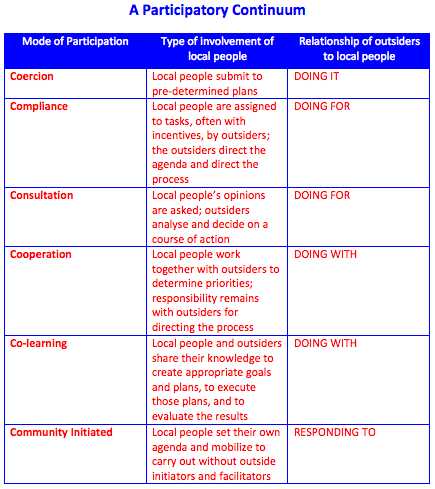 In the last blog I looked at the first three of five characteristics which I consider to be particularly applicable to a secular agency namely:
In the last blog I looked at the first three of five characteristics which I consider to be particularly applicable to a secular agency namely:
1. Expertise
2. Resources
3. Size
4. Quick fix
5. Staff mobility
We will now look at the fourth and fifth characteristics.
Quick fix
An aid agency may be particularly good at providing a ‘quick fix’ solution to a problem. However, sustainability and on-going maintenance may be weak, particularly if inadequate attention has been paid to community participation in defining the problem and determining a solution.
Failure to involve the community adequately in the process may result in a lack of ownership by that community and thus also a lack of motivation to maintain the activity or project (e.g. maintaining a bore hole and pump) once the aid agency has left the location.
The reason for this lack of ownership may be that the agency is involved primarily because it has specialist knowledge that can bring a solution – but it may not have reached that solution out of relationship. If the agency fails to integrate into the community it may be seen only as a ‘specialist’ which lacks true understanding of the local culture. Under these circumstances the local community may willingly accept the help and donated equipment – every one likes a gift and it would be rude to refuse it – without there being any underlying motivation to take responsibility for it.
In the excellent book ‘When helping hurts’ the authors show a simple chart outlining the key levels of involvement by the community (Table 6.1 from When Helping Hurts by Steve Corbett and Brian Fikkert, Moody Publishers). Adapted from B. de Negri, E. Thomas, A. Ilinigumugabo, I. Muvandi, and G Lewis, Empowering Communities: Participatory Techniques for Community-based Programme Development. Volume 1(2): Trainer’s Manual (Participant’s Handbook) (Nairobi, Kenya: Centre for African Family Studies, 1998), 4.
Elsewhere in this book they also warn against the ‘outsider’ taking over the management of an activity, a frequent pitfall when helping to implement a project in another culture. Often this is brought about by a sense of frustration that progress is slow and that their personal time on location is running out. Beware – don’t do it!
High staff turnover
As I have travelled in many nations I have learned that an agency is frequently weak in its ability to build sustained relationships with the people it is seeking to serve. A contributory factor to this is the high staff turnover which may be normal in the agency. For many cultures relationship is of a higher value than problem-solving. If this is not recognised the agency may think it has done a successful job (as demonstrated to donors through photos) yet has left a relational vacuum either when it leaves the location or when it replaces staff on the ground with another ‘expert’.
Next time I will look at the equivalent characteristics of the church which I listed previously.

